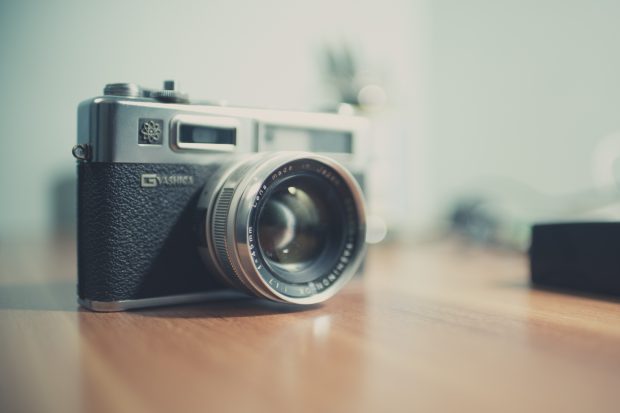Who among us is not fascinated by Macro photography ? Those photos full of color and detail, portraying daily objects that we have rarely observed so closely. Doesn't it make you wonder to see the giant head of a fly, the texture of the petals of a rose, or the details of the wings of a butterfly? I recognize that it is one of my weaknesses. I can spend hours and hours watching Macro photos of elements of nature. It is a delight that is priceless for me. If you have a SLR camera and you are also attracted to the idea of ??taking Macro photos, today's article is for you. In it I will explain some basic notions that you need to know about Macro photography and I will bring you closer to the type of objective that you will have to buy if you want to develop in this branch of photography.
FIRST .. WHAT IS MACRO PHOTOGRAPHY EXACTLY?
"Macro" means great. Macro photography is therefore a branch of photography in which the subject photographed is "large" in the photo, just as large as in real life or larger. For example, if the size of an ant in the photo is equal to or larger than its size in real life, that is a Macro photo.WHAT IS MACRO PHOTOGRAPHY USED FOR?
For me the first use is to contemplate the beauty of the "small" things that surround us. And I say small in quotation marks because the fact that they are small is something very relative, they are only small in our eyes, and that is where the utility of the Macro photography arises, which is able to teach us the beauty of the subject (whether object, animal or plant) in question. Other more objective uses are that of biological research, which is a field that owes much to Macro photography, since it has allowed documenting many studies related to many animal and plant species. Also thanks to the Macro photography it is possible to contemplate and enjoy some jewels or valuable objects whose very small size normally prevents them from being appreciated in all their detail.WHAT DO I NEED TO START TAKING MACRO PHOTOS?
Although many compact digital cameras offer a "Macro" mode (it usually carries the symbol of a flower), in reality it is not a real "Macro" mode, but simply a very close picture, in which the subject seems large but the level of "enlargement" necessary to talk about a Macro photo is not really achieved. In my time as a compact camera, I loved to take pictures in this way that I tell you, the one with the flower symbol, but the real Macro photography starts with a SLR camera. Responding to what many have been asking me: the Macro function is not a characteristic of the camera itself, but rather of the objective used. Many people want to buy their first SLR camera and he asks me which one is the most suitable for macro photography. All. The camera really only makes the photo, the focus is the objective and therefore you do not have to worry about the Macro issue when buying the camera. It is a detail to consider more when looking at objectives. Once the camera is obtained, we have two options: either to obtain a converter lens, or to obtain a specific objective for Macro photography, which is the option I recommend most.MACRO CONVERTER LENS
It is the option of who cannot afford an authentic Macro objective . It consists of using the camera with any objective that we have at hand, even that of the original kit, and hooking to this objective a small converter lens that, as its name indicates, converts the normal lens into a Macro. The truth is a very cheap option, since the converting lenses usually have a very affordable price. But be careful, I also have to prevent you that the optical quality offered by these converter lenses is light years away from the quality that a real Macro lens can offer you.MACRO OBJECTIVES
If you have tried to focus with your normal lens at a very small distance you will have verified that it has a minimum focus distance, below which it no longer focuses. Well, Macro lenses are objectives that enjoy the ability to focus at a very small distance. These are objectives that can still focus even when they are almost attached to the object or subject that we are photographing. It is easy to find this type of lens since the word "Macro" usually appears in its box, name or description, and usually has a focal length normally between 50 and 200mm (although there are even 500mm).MACRO PHOTOGRAPHY EXAMPLE
Here are a few examples that capture the aesthetic power of Macro photography.MACRO OBJECTIVES THAT I RECOMMEND
So, in general, my recommendation would be to find a focal length target between 50 and 90mm, which bears the word "Macro" in the description as is obvious, and preferably having a diaphragm aperture as large as possible (f / value low), something like that around f / 2.8 can be an excellent option. Here is my macro lens recommendation for the 4 most popular brands of SLR cameras:- For Canon: Canon - EF 100mm f / 2.5 USM lens with Macro
- For Nikon: Tamron - Digital lens 90 mm f / 2.8 Di 1: 1 SP AF with macro and integrated motor
- For Pentax: Tamron- 272EP SP AF 90 mm F / 2.8 Di Macro 1: 1
- For Sony: Tamron - 60mm f / 2.0 Di II SP AF 1: 1 lens with macro for Sony


